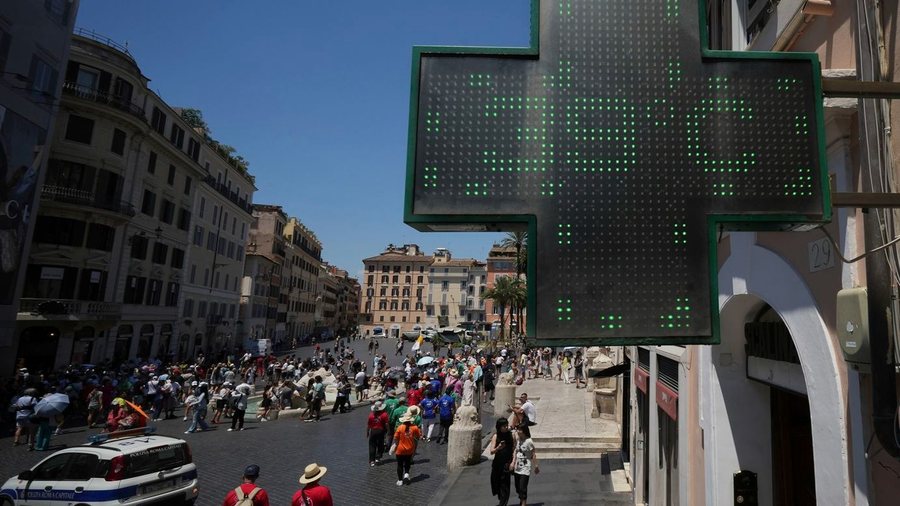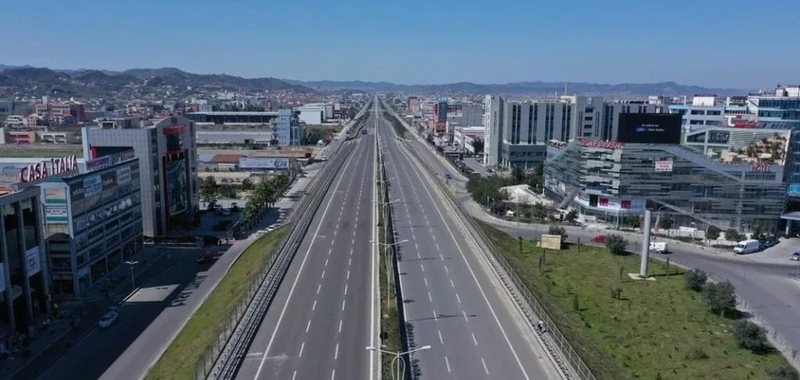The "Heat Island" Effect - Will European Cities Become Uninhabitable?

The summer of 2025 has once again been marked by a series of heat waves that have engulfed large parts of Europe. Nowhere are the effects of this extreme weather more strongly felt than in the continent's urban areas. This is due to the Urban Heat Island (UHI) phenomenon, which significantly increases temperatures compared to surrounding rural areas, intensifying the impact of heat waves.
Surface temperatures in cities were up to 10-15°C higher than in surrounding rural areas during the summer, according to data from the European Commission's Joint Research Centre.
These figures are particularly worrying, given the large number of people affected. Almost 40% of Europe's total population lives in cities, while just under 70% in urban areas.
This phenomenon is a major health concern across Europe. A study by the NOVA National School of Public Health in Portugal found that hospital admissions increased by 18.9% from baseline levels during heatwave days, straining healthcare systems.
The heat island effect occurs mainly at night, when people do not cool down properly while sleeping, which negatively affects health. This phenomenon is caused by several factors, ranging from the extensive use of construction materials, the concentration of buildings and heavy traffic. As a result, during the day the maximum temperature in cities is higher, but even at night it does not bring a significant decrease in degrees.
Tall buildings and narrow streets exacerbate this effect, as they heat the air that remains between them, blocking the natural circulation of wind that would help cool the air.
In many cities, this is particularly true in the poorest urban areas, characterized by dense and irregular urbanization. This factor, combined with poor housing conditions, lack of insulation, and limited access to green spaces or other ways to cool down, makes the heat island effect a socio-economic issue.
However, cities can take a number of measures to mitigate the urban heat island effect. These include creating wind corridors for ventilation, building green roofs and facades, planting more vegetation, and making better use of water.

Greece, renewable energy is "wasted" - About 10% of production from green sources remained off the grid
An increasing percentage of renewable energy production in Greece is being wasted, especially during periods of low demand. This situation raises questions......

Nvidia and AMD "hand over" profits to Trump - 15% of revenue from chip sales in China goes to the US government
Nvidia and AMD have agreed to give the United States government 15% of revenue from sales in China of advanced computer chips, such as Nvidia's H20 model,......

Wine barrels are "filled" in France - Production returns to growth after a difficult year
French wine production is expected to rebound by at least 10% this year, after a low in 2024 due to adverse weather conditions. However, the recovery will be......

Tirana Bypass, winner announced for phase II - 2.27 billion lek bid for the segment aims to connect two highways without entering the capital
With a bid of 2.27 billion lek, the Albanian Road Authority has announced the winning company that will build one of the segments of the Tirana bypass. The......

The week starts positively for the major currencies – Dollar, Euro and Pound strengthen!
The US dollar, after a continuous decline during the past week, has started this week positively, registering an increase this morning as it was bought today......

Illegal building collapses in Radhima - IKMT used 32 kg of explosives
On Monday morning, a 3-story building built without a permit collapsed with a controlled explosion on the Vlora-Orikum road, near Radhima beach. 32......

MEKI reacts to the claims of the company ''Fokus Media News'' - ''Final court decisions force the release of the property of "KAYO" sh.a''
The Ministry of Economy, Culture and Innovation has reacted to the claims of the company "Focus Media News" for the extension of the lease contract until......

Police vacate News 24 premises, property passes to 'KAYO' - State Attorney's Office: The lease contract has expired for 3 years
The Police and the Bailiff Service have requested News 24 to vacate the building in the former Autotraktor Factory, in Shkoza, Tirana. In the early hours of......





















